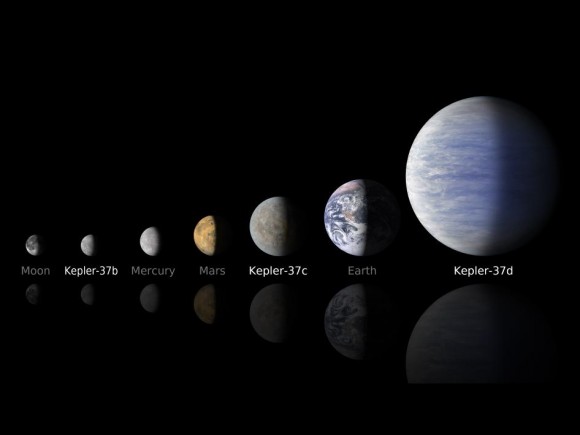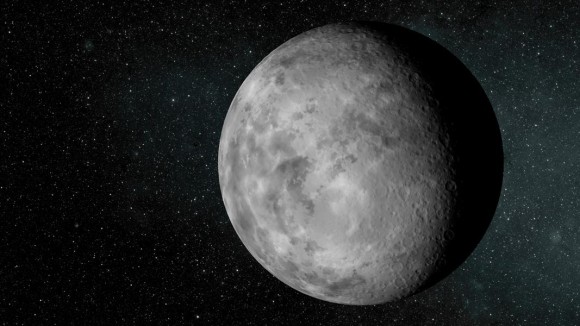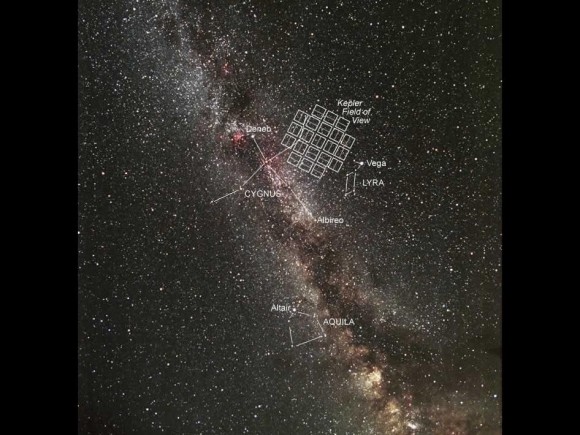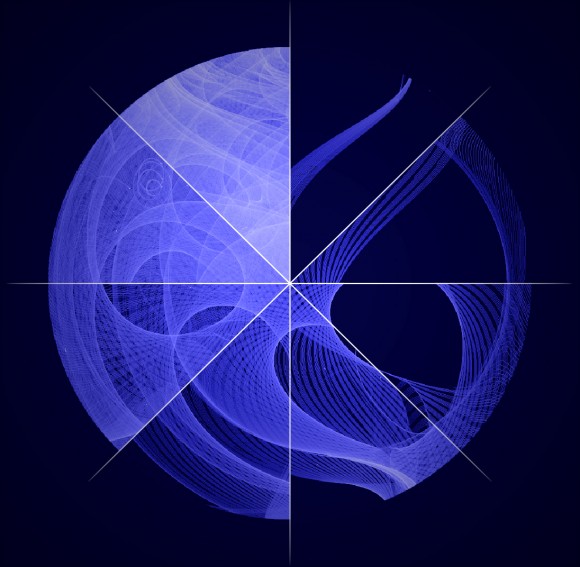Granted, I’m not a scientist but a concert trained pianist in the Western classics, whose proclivity for understanding cleanly defined scientific terms used in music contexts includes understanding cleanly defined music terms used in scientific contexts, presuming, too, that distinctions can be easily defined within mutual accessions.
Nonetheless, this is a terrific article wrt the scales of things, although not mentioned, I’m guessing the scientists’ listening involves their listening to sonified data. Highlights mine; links in original.
_________________
Smallest Exoplanet Yet Discovered by ‘Listening’ to a Sun-like Star
Universe Today, Nancy Atkinson | 20FEB13

^ NASA’s Kepler mission has discovered a new planetary system that is home to the smallest planet yet found around a star like our sun, approximately 210 light-years away in the constellation Lyra. Credit: NASA/Ames/JPL-Caltech
- Scientists have discovered a new planet orbiting a Sun-like star, and the exoplanet is the smallest yet found in data from the Kepler mission. The planet, Kepler-37b, is smaller than Mercury, but slightly larger than Earth’s Moon. The planet’s discovery came from a collaboration between Kepler scientists and a consortium of international researchers who employ asteroseismology — measuring oscillations in the star’s brightness caused by continuous star-quakes, and turning those tiny variations in the star’s light into sounds.
“That’s basically listening to the star by measuring sound waves,” said Steve Kawaler, from Iowa State University in the US, and a member of the research team. “The bigger the star, the lower the frequency, or ‘pitch’ of its song.”
The measurements made by the astroseismologists allowed the Kepler research team to more accurately measure the tiny Kepler-37b, as well as revealing two other planets in the same planetary system: one slightly smaller than Earth and one twice as large.
While Kepler 37b is likely a rocky planet, this would not be a great place for humans to live. It’s likely very hot with a smoldering surface and no atmosphere.
“Owing to its extremely small size, similar to that of the Earth’s moon, and highly irradiated surface, Kepler-37b is very likely a rocky planet with no atmosphere or water, similar to Mercury,” the team wrote in their paper, which was published this week in Nature. “The detection of such a small planet shows for the first time that stellar systems host planets much smaller as well as much larger than anything we see in our own Solar System.”
The host star, Kepler-37, is about 210 light-years from Earth in the constellation Lyra. All three planets orbit the star at less than the distance Mercury is to the Sun, suggesting they are very hot, inhospitable worlds. Kepler-37b orbits every 13 days at less than one-third Mercury’s distance from the Sun. The estimated surface temperature of this smoldering planet, at more than 800 degrees Fahrenheit (700 degrees Kelvin), would be hot enough to melt the zinc in a penny. Kepler-37c and Kepler-37d, orbit every 21 days and 40 days, respectively.

^ Artist’s concept of Kepler-37b. The planet is slightly larger than our moon, measuring about one-third the size of Earth. Credit: NASA/Ames/JPL-Caltech
The size of the star must be known in order to measure the planet’s size accurately. To learn more about the properties of the star Kepler-37, scientists examined sound waves generated by the boiling motion beneath the surface of the star.
“The technique for stellar seismology is analogous to how geologists use seismic waves generated by earthquakes to probe the interior structure of Earth,” said Travis Metcalfe, who is part of the Kepler Asteroseismic Science Consortium.
The sound waves travel into the star and bring information back up to the surface. The waves cause oscillations that Kepler observes as a rapid flickering of the star’s brightness. The barely discernible, high-frequency oscillations in the brightness of small stars are the most difficult to measure. This is why most objects previously subjected to asteroseismic analysis are larger than the Sun.
“Studying these oscillations [has] been done for a long time with our own Sun,” Metcalfe told Universe Today, “but the Kepler mission expanded that to thousands of Sun-like stars. Kepler-37 is the coolest star, as well as the smallest star that has been measured with asterosiesmology.”
Kepler-37 has a radius just three-quarters of the Sun. Metcalfe said the radius of the star is known to 3 percent accuracy, which translates to exceptional accuracy in the planet’s size.
Metcalfe launched a non-profit organization to help raise research funds for the Kepler Asteroseismic Science Consortium. The Pale Blue Dot Project allows people to adopt a star to support asteroseismology, since there is no NASA funding for asteroseismology.
“Much of the expertise for this exists in Europe and not in the US, so as a cost saving measure NASA outsourced this particular research for the Kepler mission,” Metcalfe “and NASA can’t fund researchers in other countries.”
Find out how you can help this research by adopting one of the Kepler stars at the Pale Blue Dot Project website.
The Kepler spacecraft carries a photometer, or light meter, to measure changes in the brightness of the stars it is focusing on in the Cygnus region in the sky.

^ Kepler Mission Star Field. An image by Carter Roberts of the Eastbay Astronomical Society in Oakland, CA, showing the Milky Way region of the sky where the Kepler spacecraft/photometer is pointing. Each rectangle indicates the specific region of the sky covered by each CCD element of the Kepler photometer. There are a total of 42 CCD elements in pairs, each pair comprising a square. Credit: Carter Roberts / Eastbay Astronomical Society.
Metcalfe said this discovery took a long time to verify, as the signature of this very small exoplanet was hard to confirm, to make sure the signature wasn’t coming from other sources such as an eclipsing binary star.
Kawaler said Kepler is sending astronomers photometry data that’s “probably the best we’ll see in our lifetimes,” he said, adding that this latest discovery shows “we have a proven technology for finding small planets around other stars.”
“We uncovered a planet smaller than any in our solar system orbiting one of the few stars that is both bright and quiet, where signal detection was possible,” said Thomas Barclay, lead author of Nature paper. “This discovery shows close-in planets can be smaller, as well as much larger, than planets orbiting our sun.”
And are there more small planets like this out there, just waiting to be found?
As the team wrote in their paper, “While a sample of only one planet is too small to use for determination of occurrence rates it does lend weight to the belief that planet occurrence increases exponentially with decreasing planet size.”
Sources: phone interview with Travis Metcalfe, Iowa State University, NASA/JPL







